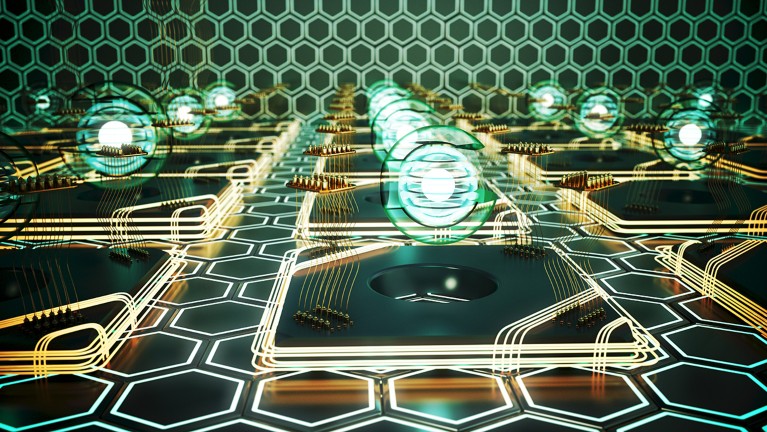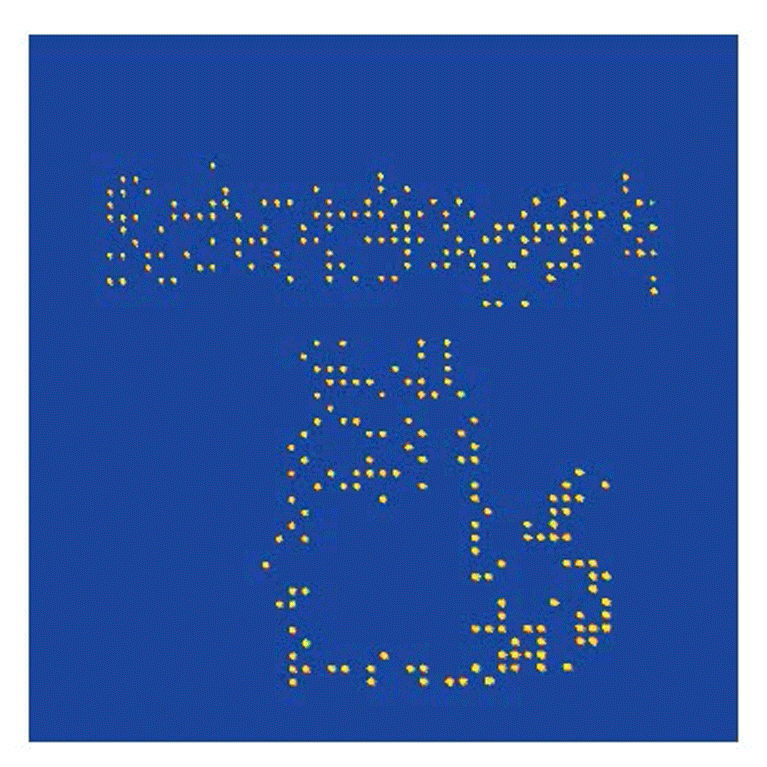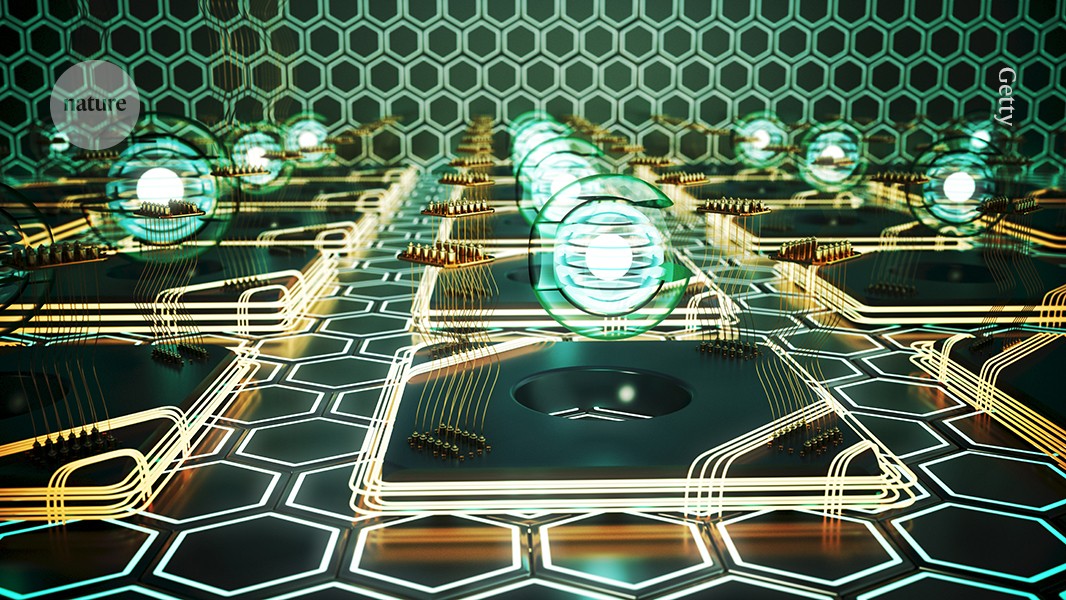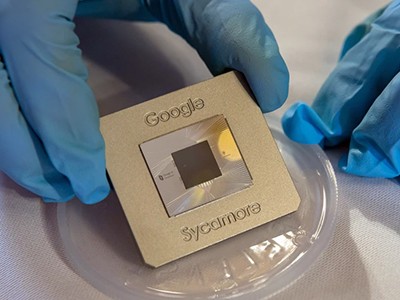
Quantum computing qubits are arranged in a grid in this artist’s illustration.Credit: Getty
Artificial intelligence (AI) tools are increasingly helping scientists to write papers, conduct literature reviews and even design laboratory experiments. Now researchers can add optimizing quantum computing to the list.
A team has used an AI model to calculate the best way to rapidly assemble a grid of atoms that might one day serve as the ‘brain’ of a quantum computer. To show just how quickly the model can re-shuffle the atoms, the team also used the system to create a tiny animation of Schrödinger’s cat. The work was reported last week in Physical Review Letters1.
Study co-author Jian-Wei Pan, a physicist at the University of Science and Technology of China in Hefei, says the team became interested in using AI to speed up the building these ‘neutral atom arrays’ after one of his former students got a job in an AI laboratory. “AI for science is emerging as a powerful paradigm for addressing complex scientific problems,” he says. One of the big challenges in using arrays of atoms for quantum computing is working out how to rearrange them in an “efficient, fast and scalable manner”, Pan says. AI solved that problem for the team — and did it quickly.
Playing with atoms
Classical computers carry out operations using binary digits, or bits, encoded as a 1 or 0. Quantum computers use qubits, which can be put into a ‘superposition’, in which the two states — 1 and 0 — exist simultaneously. Calculations involve entangling qubits, which means that their states become linked.
Google uncovers how quantum computers can beat today’s best supercomputers
Researchers have been creating qubits with materials such as superconducting circuits, trapped ions and grids of neutral atoms, which are prized for their ability to maintain their quantum states over a relatively long time. To use the atoms as qubits, scientists trap them with laser light and then store quantum information in the energy levels of their electrons.
The hope is that if you use enough atoms, a quantum computer will one day overcome the errors that often plague these systems — and eventually perform calculations that aren’t feasible for classical computers.
Pan and his colleagues trained their AI model by showing it how various distributions of rubidium atoms could be nudged into a range of grid configurations using different patterns of laser light. Depending on the atoms’ starting locations, the model could then quickly work out the correct pattern of light needed to rearrange them into a selection of 2D and 3D shapes.

An animation created with an AI-guided laser pattern depicts Schrödinger’s cat (version here slowed by a factor of 33).Credit: R. Lin et al., Phys. Rev. Lett.
The researchers used their model to assemble an array of up to 2,024 rubidium atoms in just 60 milliseconds. By contrast, another group assembled about 800 neutral atoms last year2, but without the use of AI, it took an entire second. For the video of Schrödinger’s cat, the AI system directed laser light to move atoms to create the desired patterns. The atoms became visible when they emitted light in response to laser pulses.
Scaling up
Creating the right pattern of light, or hologram, that dictates how to arrange neutral atom arrays usually involves a slew of painstaking calculations. “And doing those calculations as you make the arrays bigger and bigger can take up a fair amount of time,” says Mark Saffman, a physicist at the University of Wisconsin–Madison. That’s why many of his colleagues “were really impressed by this work, as was I.”



